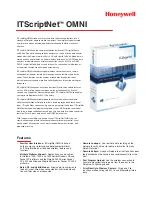
51
H ow f l at te ni ng c hange s t he do c u me nt
At its simplest, the process of flattening changes how overlapping transparency objects are
drawn, without changing how they look, so that the document still appears to use transpar-
ency but will successfully print on an output device that doesn’t handle native transparency.
To achieve this effect, the InDesign transparency flattener examines the interactions at every
point of the transparency and does three things to spreads containing transparency:
1. It cuts the transparent art apart and represents overlapping transparent regions by
discrete, abutting elements, each with its own color.
2. It retains the integrity of the original transparent objects as much as possible (e.g., type
stays type, vectors stay vectors), but it may rasterize some type or artwork depending on
the transparency flattener preset that’s applied.
3. It sets rasterized areas to a resolution determined by the current transparency flattener
preset. Images already present in the document are flattened using the resolution of the
highest-resolution image in the document.
Original art with native transparency
Flattened art simulates transparency
by cutting up objects
(objects slightly shifted for illustrative purposes)
If a spread doesn’t contain transparency, the flattener leaves it alone.
Note:
The transparency flattener in InDesign CS preserves overprinting settings except in
two cases:
•
The overprints are affected by transparency. In this case, flattening takes the overprinting
objects into account, resulting in the same output that would happen on a transparency-
capable RIP. Discrepancies may occur, however, if the RIP is configured to convert spot
colors to process. You can use the Ink Manager to convert spot colors to process colors
before printing.
















































